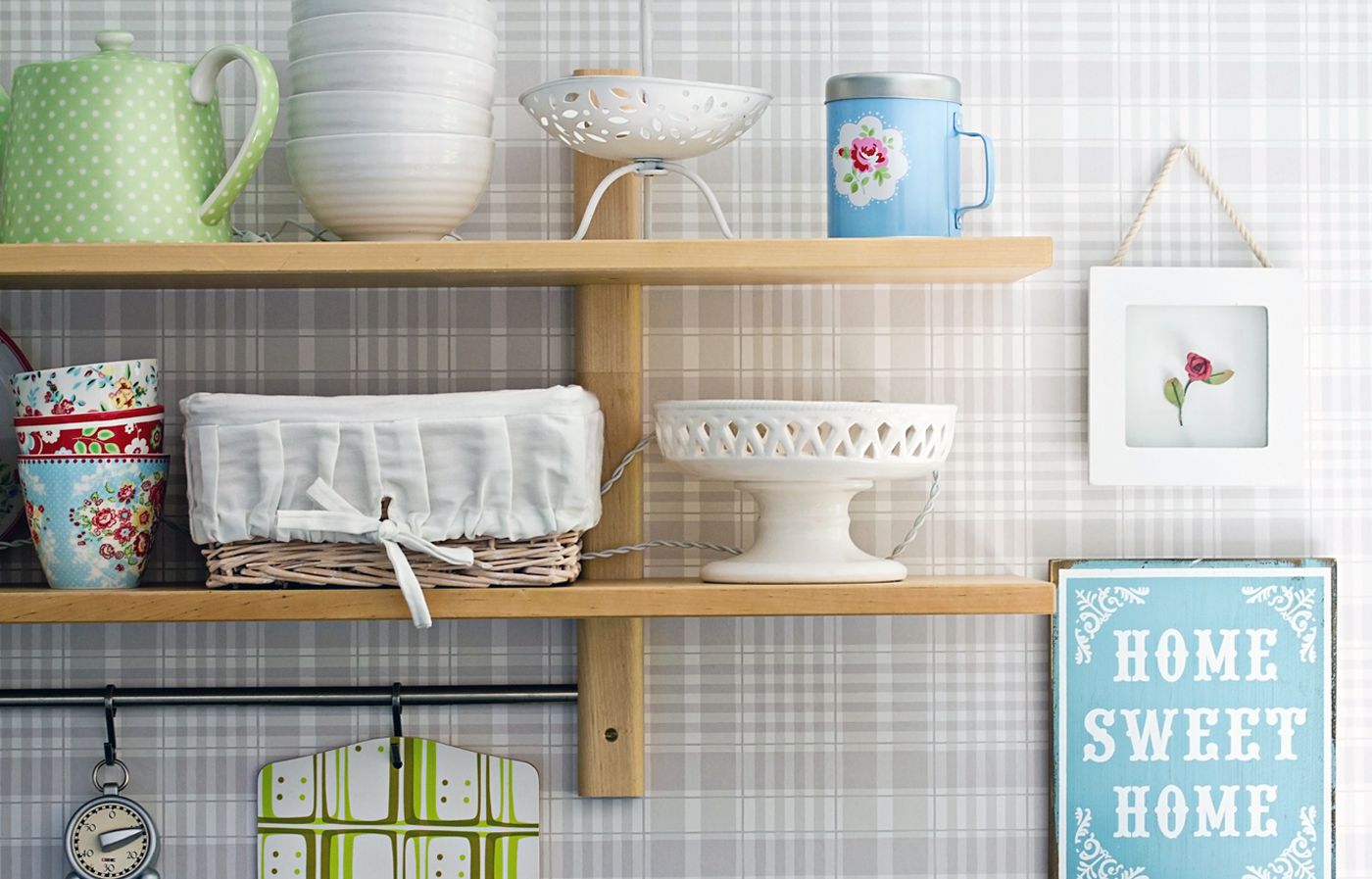Open shelving helps homeowners store dishes, decor, and other frequently used items in an airy space. The furniture is stylish and functional, and offers an opportunity to expand on your kitchen’s existing design scheme. Learn how open shelving can benefit your home below so that you can enrich your everyday cooking experience.
Show Off Kitchen Shelving
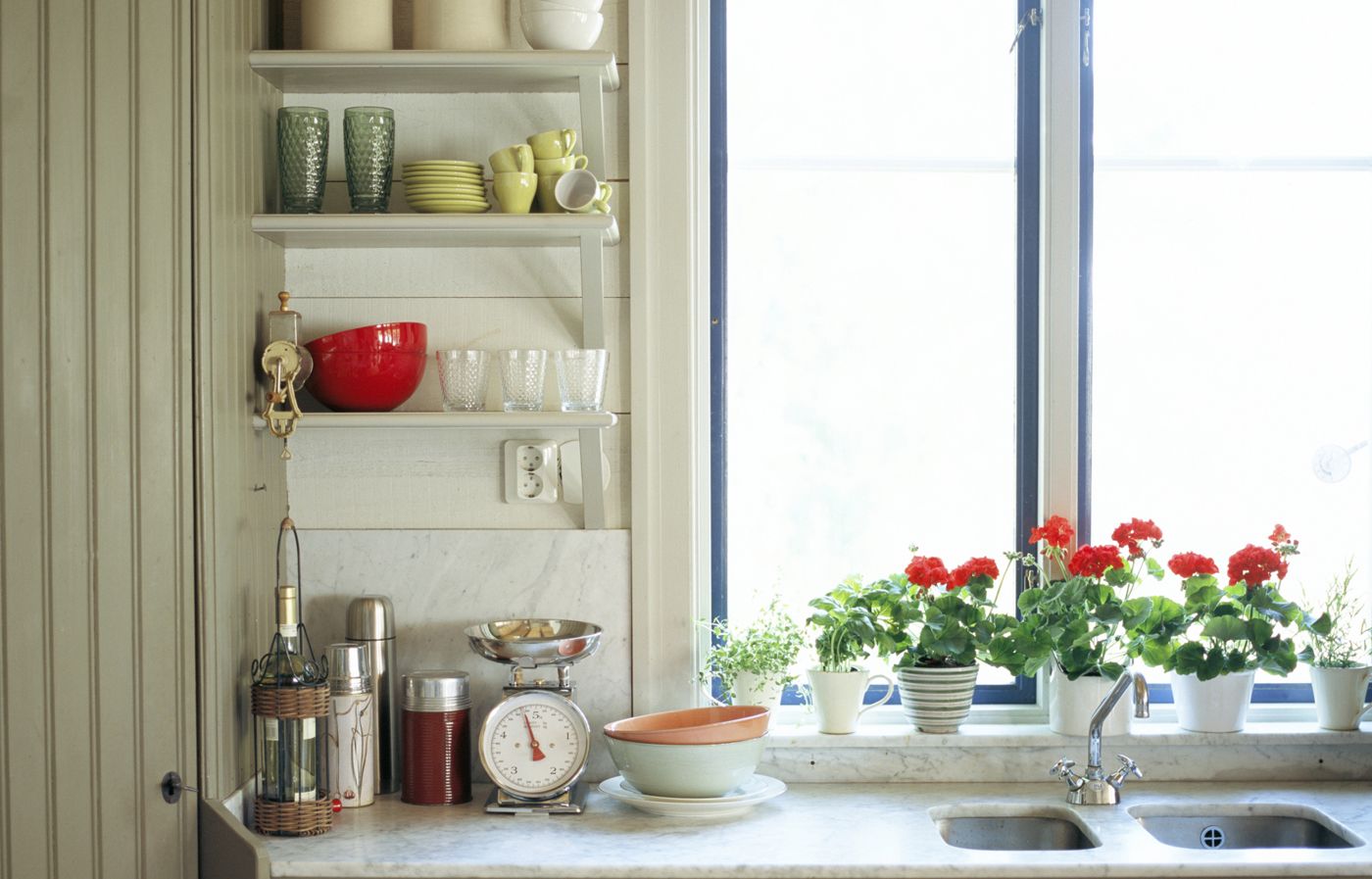
Open shelving in the kitchen is more than just a storage solution. It’s an opportunity to display your personality and style, whether you’re showcasing elegant glassware or simple, functional pieces. Ask yourself the questions below to determine whether open shelving is right for you:
- Am I naturally tidy and organized?
- Am I willing to maintain a curated look?
- Do I enjoy displaying my kitchenware?
If you answered yes, This Old House design editor Tisha Leung says you’re ready to invest in open shelving. “It’s a really big step visually, and your whole lifestyle changes,” she says.
1. Ease Into the Style
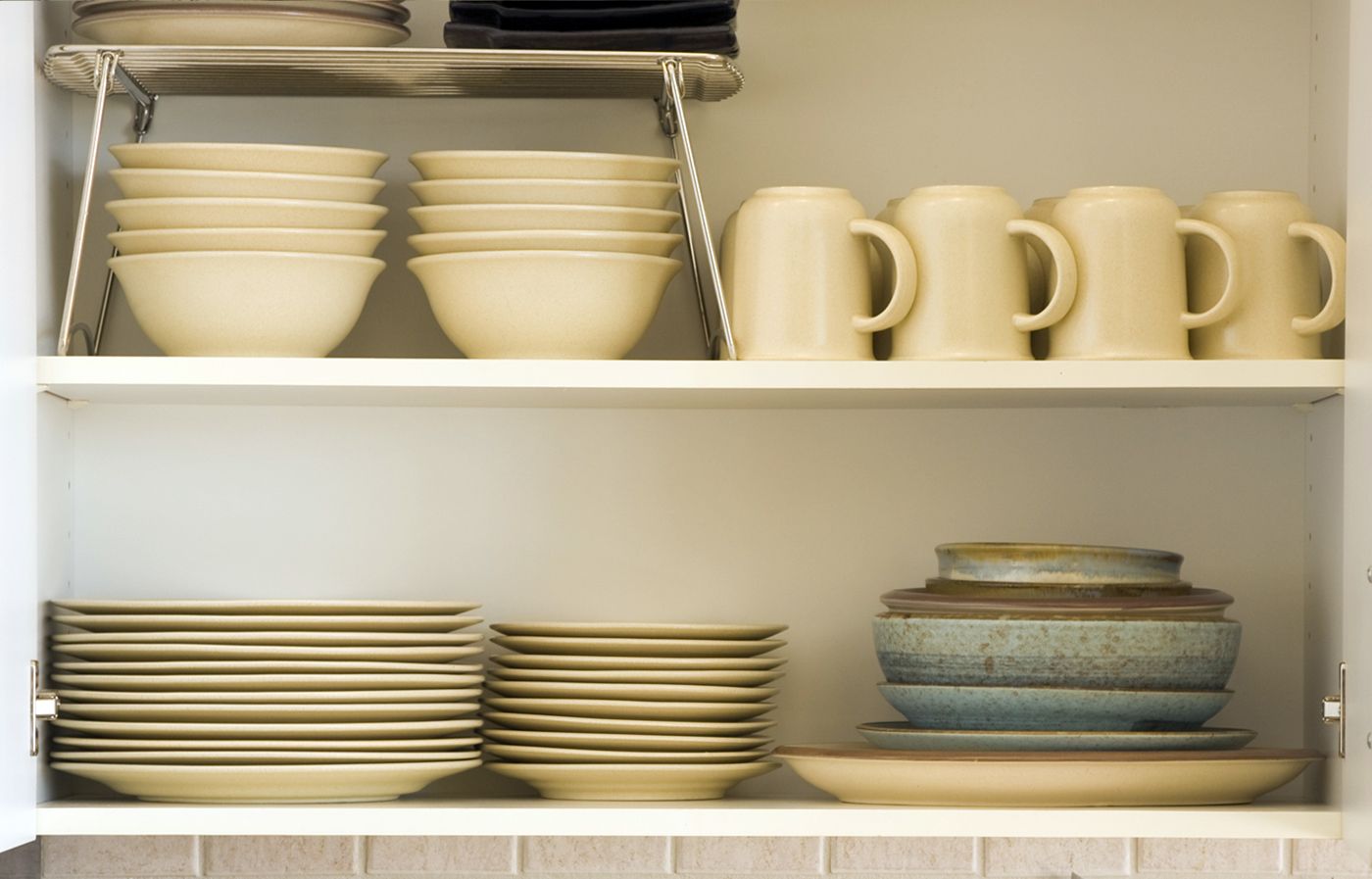
When you’re transitioning to open shelving, start small and adapt gradually. Leung recommends that homeowners first remove cabinet doors from your kitchen cabinets. This approach allows you to do the following:
- Assess how well you maintain the exposed area
- Determine if the style suits your kitchen’s overall look
- Experience the look and feel of open shelving without a full commitment
This trial period can help you decide whether to expand the open shelving concept throughout your kitchen.
2. Avoid a White Background
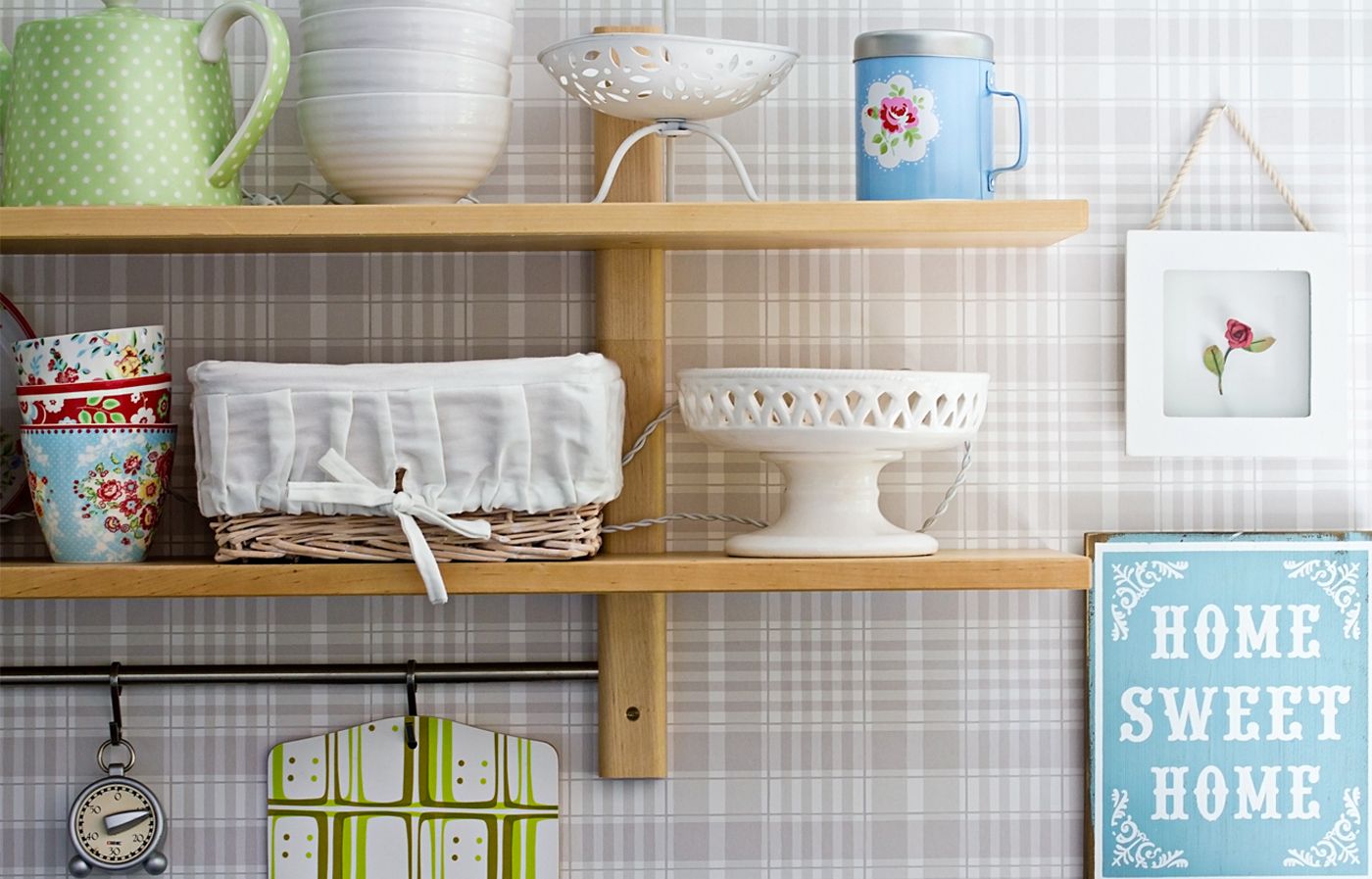
White kitchens are an enduring trend, but stark white is not the best choice for the space around open shelving. Consider alternatives that add depth and interest to your shelving display, such as the following options:
- Beadboard for a classic, textured look
- Colored walls that complement your kitchen’s color scheme
- Visually interesting textured tiles that you can easily clean
Consider how any potential background will showcase your items and how easily you can clean them. A colored or textured background hides dust more successfully than a white background and provides a beautiful backdrop for your displayed items.
3. Fill Bottom Shelves With Functional Items
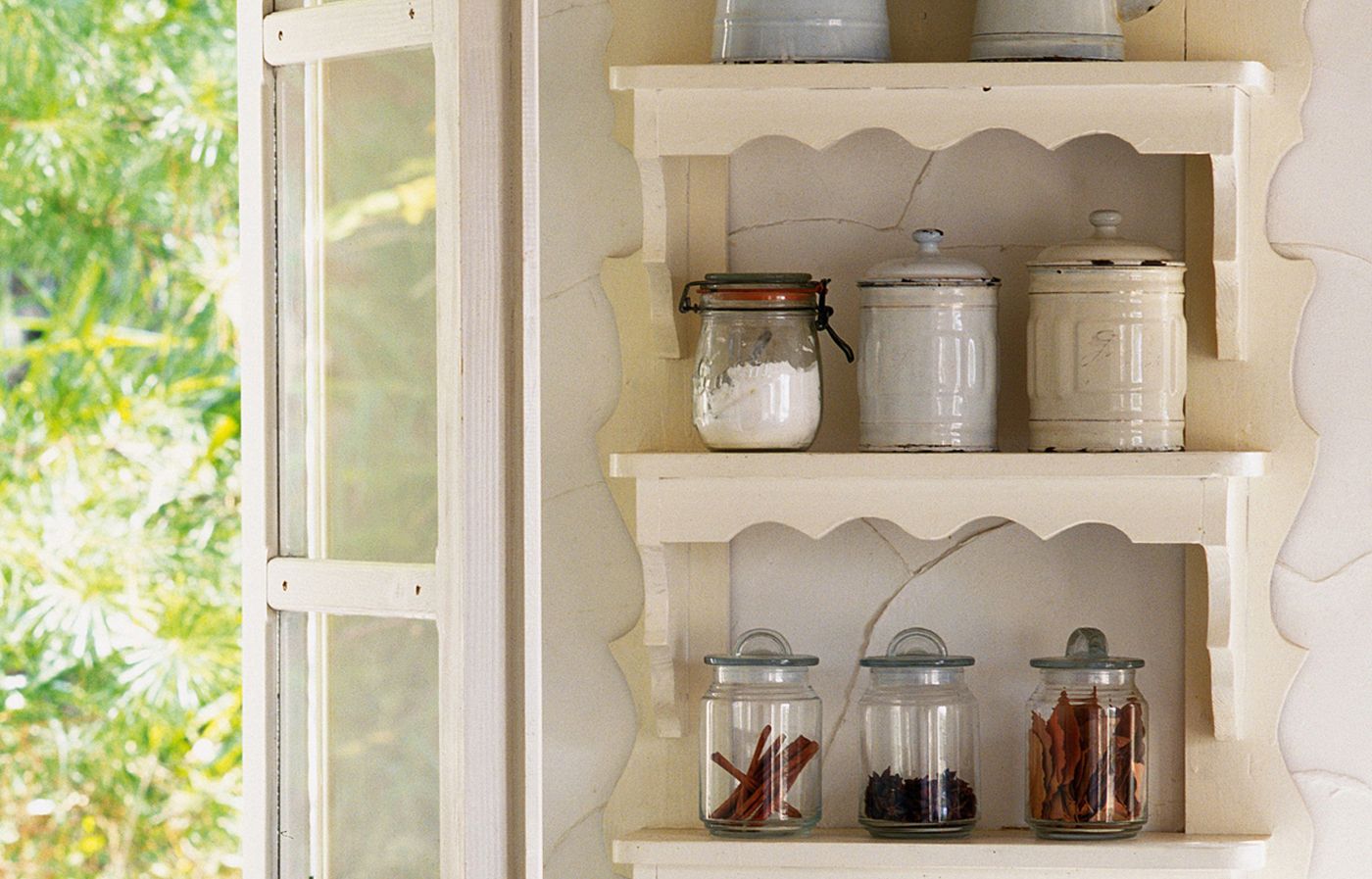
You should combine function and visual appeal when organizing your shelves. Place the items you use most frequently on the bottom shelves and the more decorative items higher up. This strategy allows you to easily access items you frequently use and prevents clutter.
Open shelving encourages better organization because you can’t cram items into empty space like you might with cabinets. This visibility promotes a more intentional kitchen storage approach.
4. Mix Functional and Decorative Items
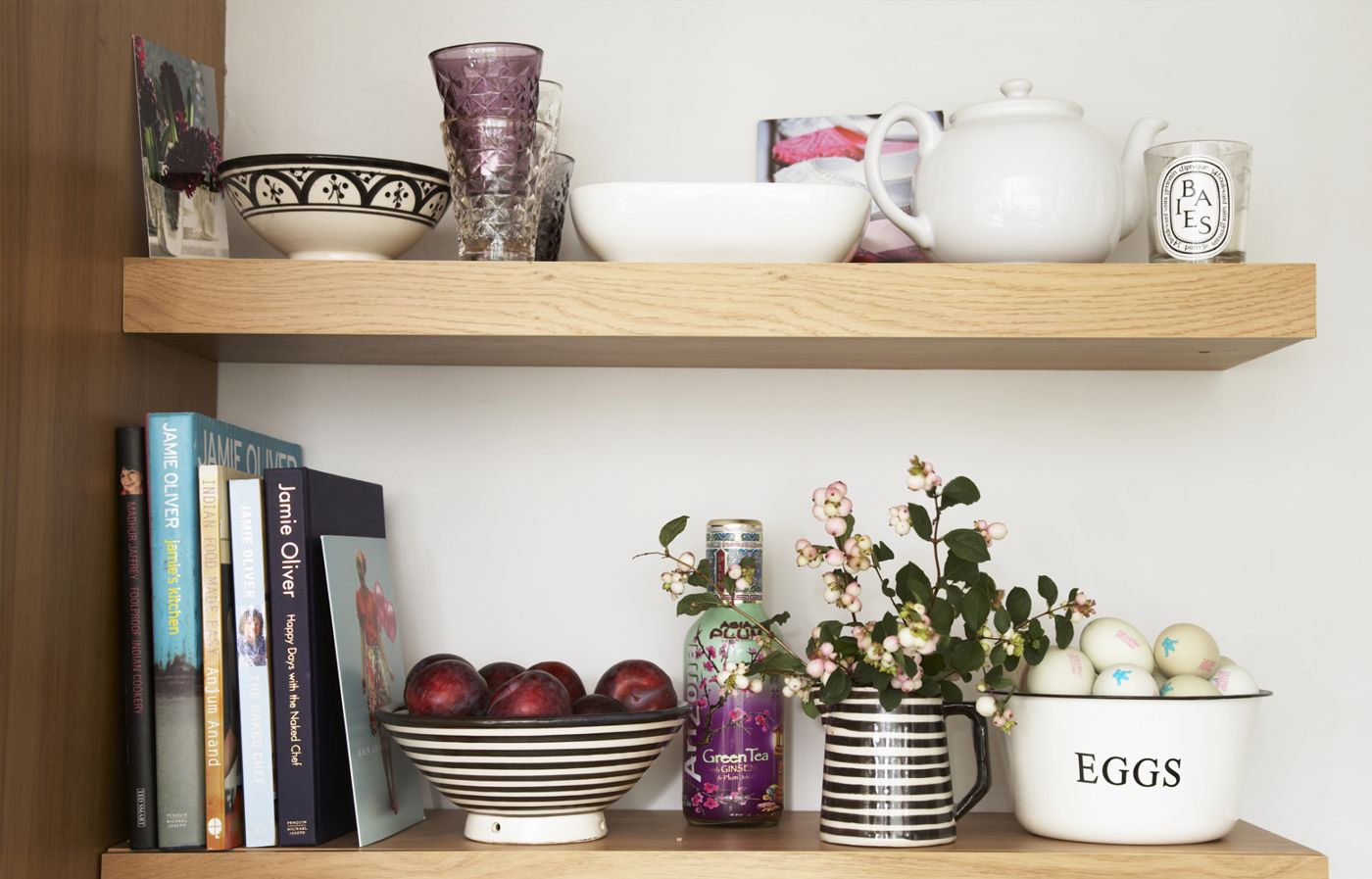
Open shelving allows you to blend practical storage solutions with your personal style. Leung encourages a balanced approach. “They don’t all have to be functional pieces,” she says. “Mix functional with an antique find, like a soup tureen or a vintage canister that has a great shape or silhouette. “
To create an engaging display, consider incorporating the following items:
- Cookbooks that feature attractive spines or covers
- Decorative bowls or platters that complement your kitchen’s style
- Everyday kitchenware in attractive colors or patterns
- Small potted herbs or plants
- Vintage or antique kitchen items that add character
5. Tell a Cohesive Design Story
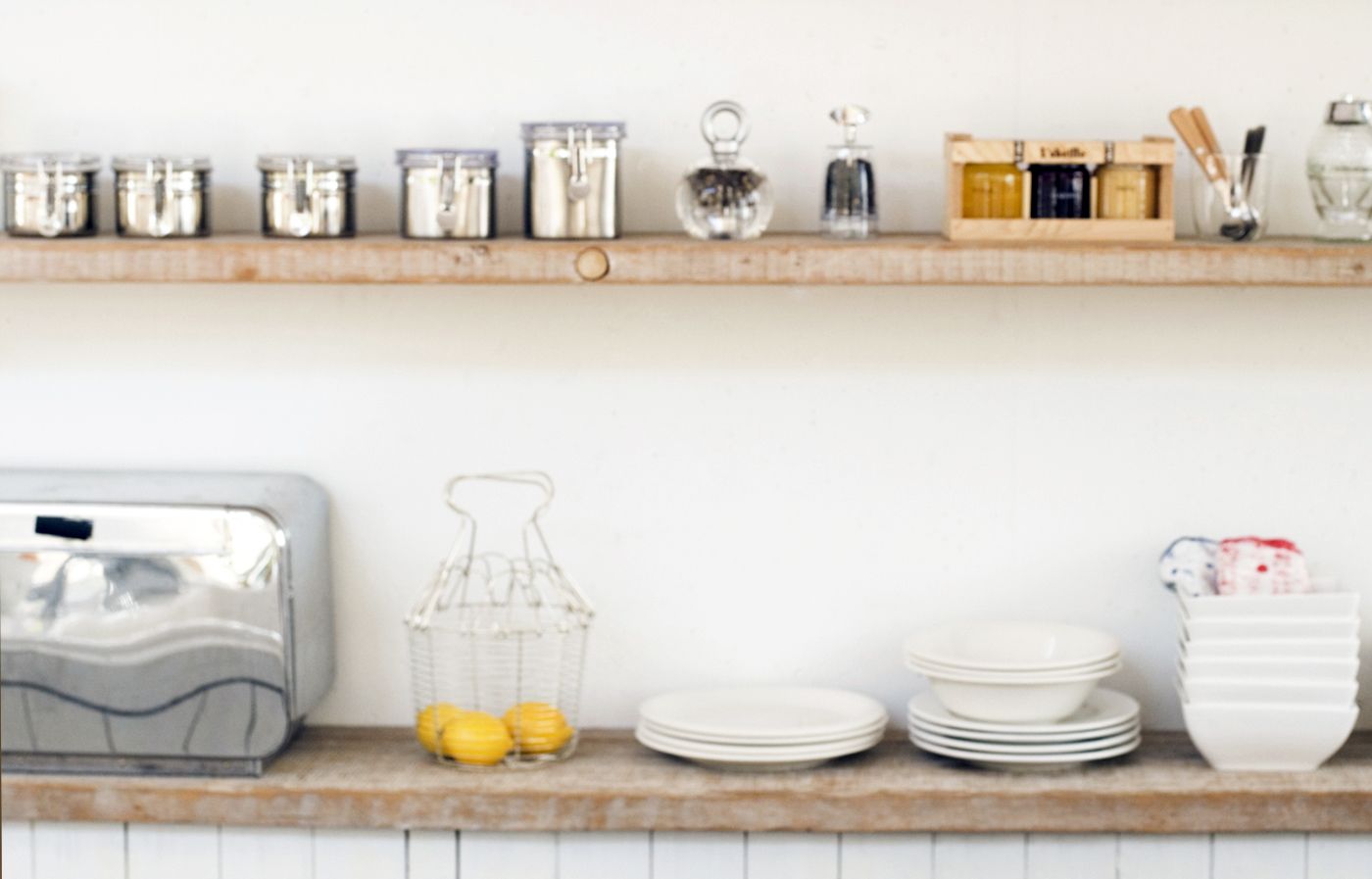
Create a cohesive look that ties into your existing kitchen design but still offers something new. Leung suggests using your favorite items or dishware collections as inspiration for your design story.
Follow the steps below to create a cohesive design story:
- Choose a color theme based on your favorite dinnerware or kitchen accessories.
- Incorporate neutral elements to balance bold colors or patterns.
- Use shapes, colors, or materials repetitively to create visual harmony.
- Consider the overall style of your kitchen when you’re selecting display items.
- Rotate items seasonally to keep the display fresh and interesting.
Implementing Open Shelving in Your Kitchen
Once you’ve considered the rules of successful open shelving, you can incorporate this design into your kitchen space. Consider testing the method out with wall-mounted shelves or floating shelves to add open storage without the need for significant renovation.
Keep the following factors in mind when you’re selecting shelves:
- Compatibility with your kitchen’s style
- Ease of installation and maintenance
- Flexibility so that you can easily make adjustments
- Your shelves’ weight capacities
